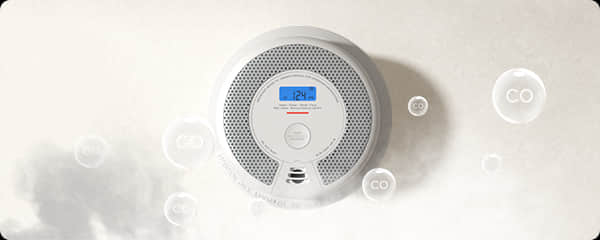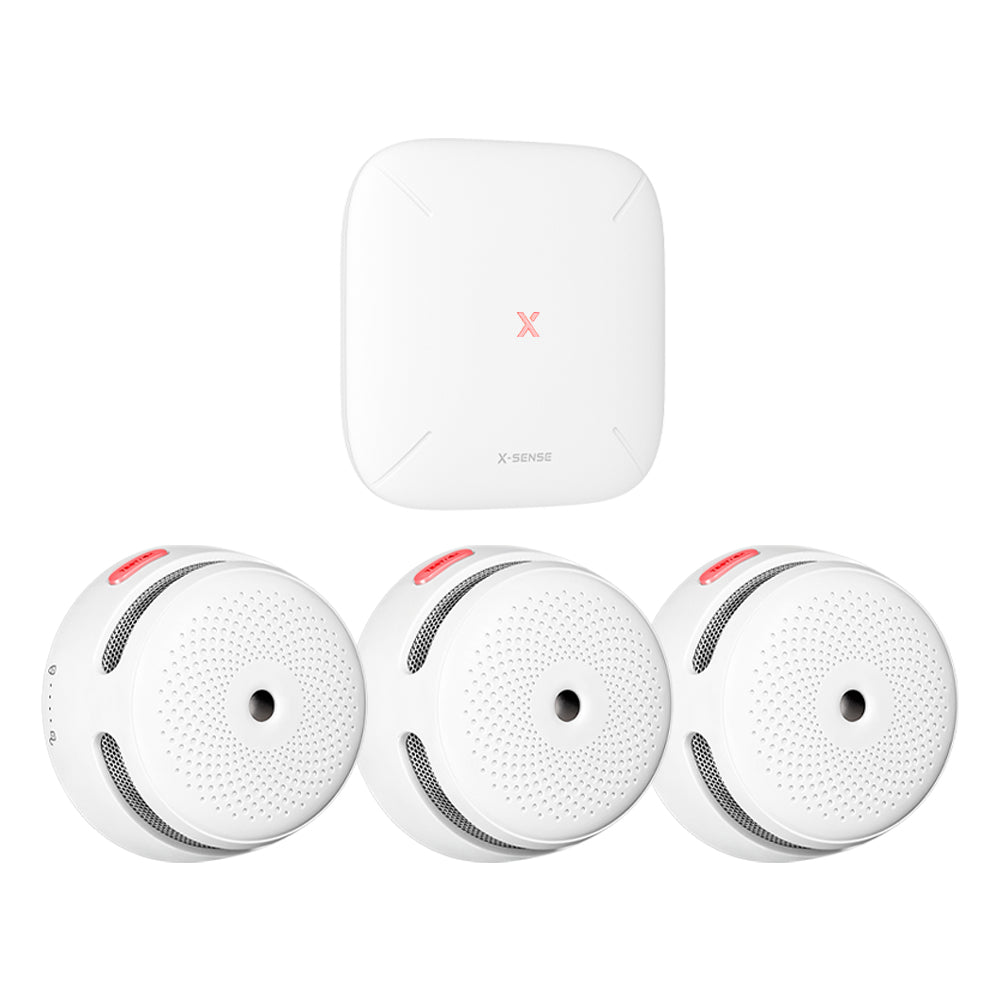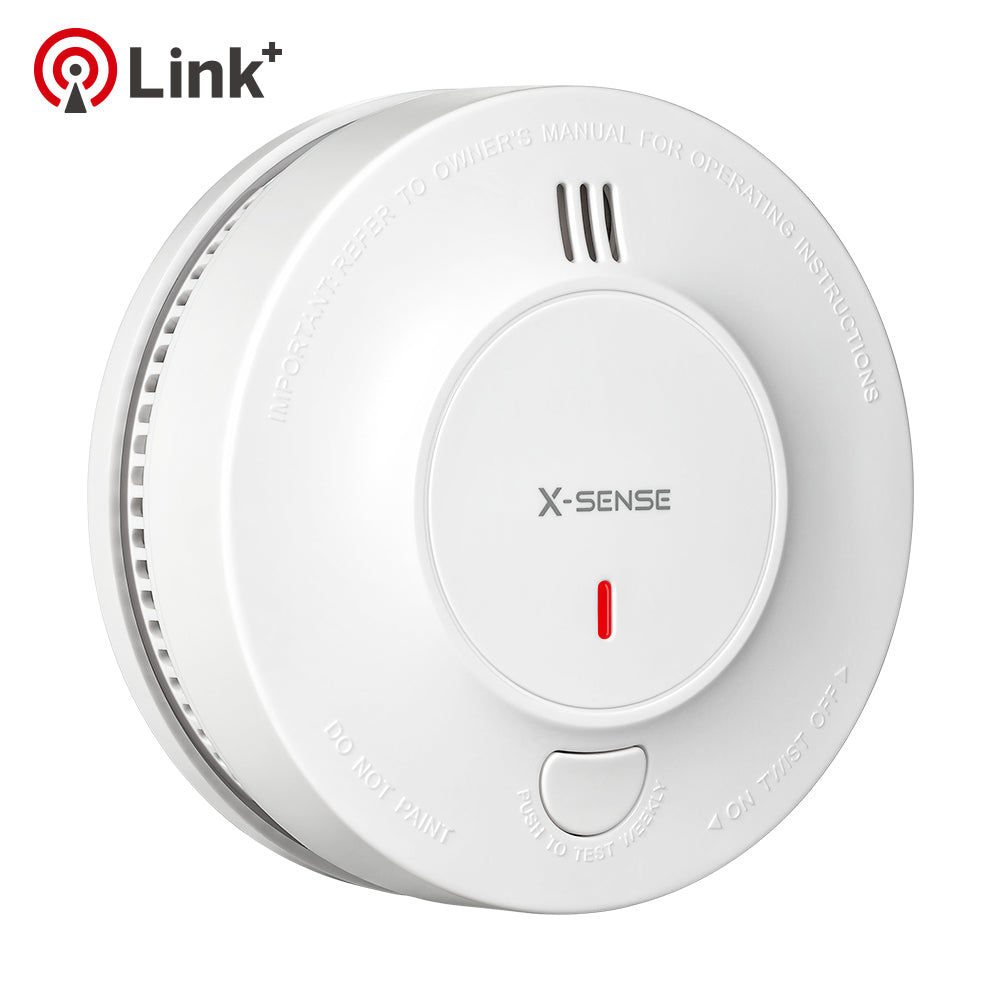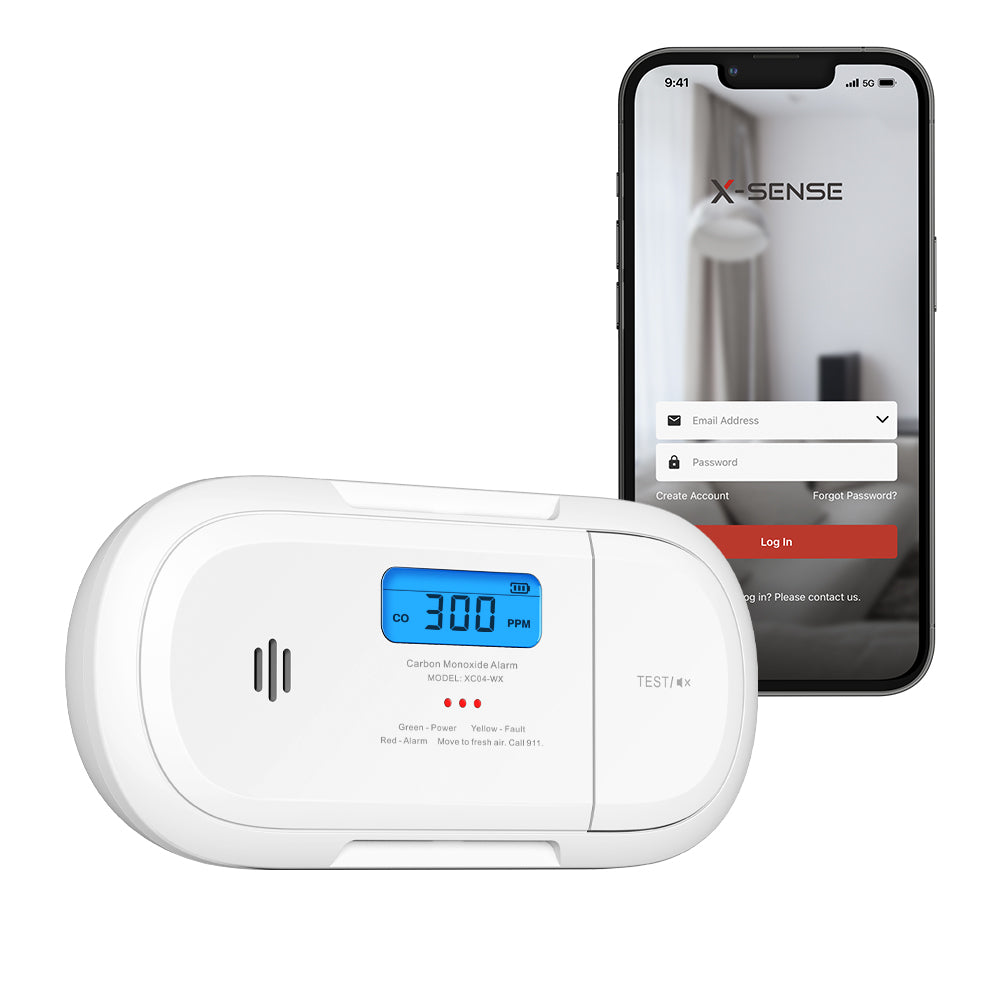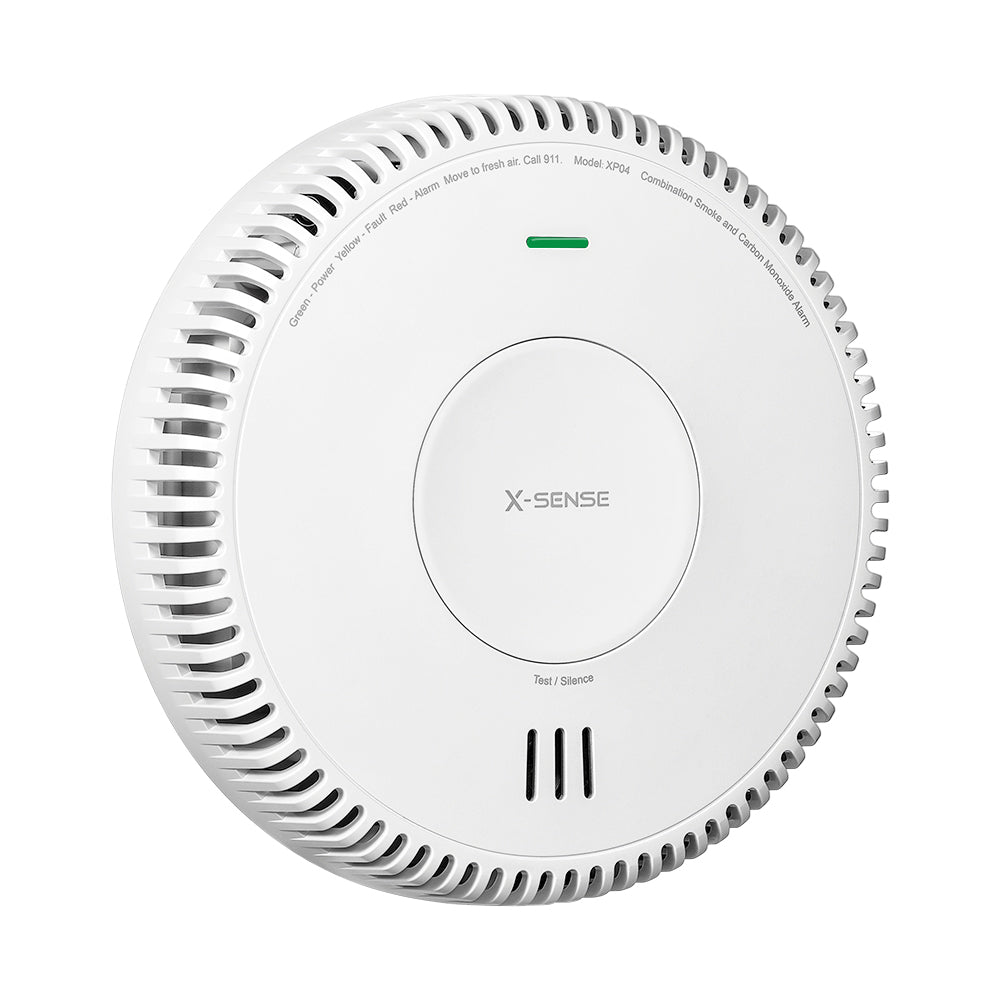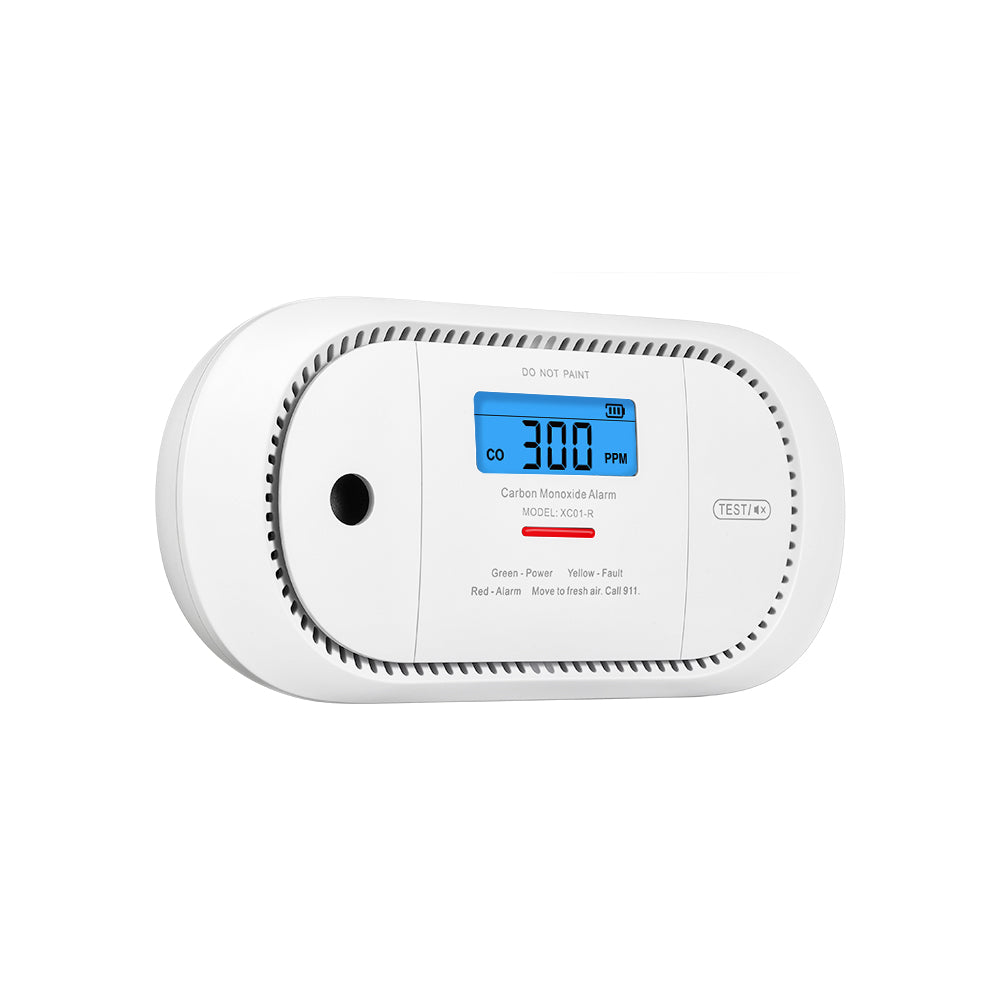All about Hard Wired Smoke Detector
Tue, Sep 15, 2020
As we all know the importance of having an appliance that detects carbon monoxide and fire calamities. A hard-wired smoke detector is an appliance that detects the fire and carbon monoxide and other dangerous gases. So here on this page, you will get the information regarding the hard-wired smoke detector. You will get the information regarding its installation, maintenance, dependability, etc. And you will get to know whether this Hardwired smoke detector is a good device or not.
Overview of the Hardwired Smoke Detector
Hardwired means the electrical appliance in which the circuit cord passes directly into the electrical box of the appliance. In short words, the hardwired appliance should not seal into the electrical outlet.
The outer views of the hard-wired smoke detectors are the same as the battery-powered smoke detectors. The difference between them is that the hard-wired smoke detectors have an electrical wire that runs behind the wall or ceiling straightly into the other side of the detector. That cable gives the chief power to the detector, except during a power cut.
Hardwired or Battery-powered Smoke Alarms?
Ok, now let’s see the maintenance, Interconnection, and Dependability of the hardwired or battery-powered smoke alarms.
1. Maintenance
The maintenance of the battery-operated smoke detectors mainly depends upon the battery replacement. Nonetheless, you should change the battery in a well-organized manner to avoid the malfunctioning and power drainage of the smoke alarms. For the time being, before starting the preservation tasks for the hard-wired smoke alarms, you have to turn off the chief electrical panel. Apart from the detector, the wiring should be checked by the technician or expert.
2. Interconnection
You should not chain at least two battery-operated detectors together. They are independent appliances that can't flexibly capacity to other associated appliances. Hard-wired smoke detectors can be intertwined. So on the off chance that one detector fails to perform, the various detectors also stop to perform. If there is a break out of the fire the other alarms also make the beeping or chirping sounds continuous to alert you.
3. Reliability
Hard-wired smoke detectors are more trustworthy as they are associated with the chief power source force supply. When the alarm signals or peeps, they won't stop until the alarm is switched off. If there are any instances of power or intensity interferences, they have the battery reinforcements for continuous activity. The Battery-operated smoke detectors rely entirely upon the batteries. A feeble battery implies dull activities. the detectors make sounds depending upon the battery levels, if the battery is low the sound is also low.
How to Install Hardwired Smoke Alarms
1. What you will need for fixing them
Equipment and Tools:
- Tape measure
- 6- foot stair ladder
- Pencil
- Drywall saw
- Stud finder
- Cordless drill
- Cable ripper
- voltage tester
- Fish tape
- Wire stripper
Materials:
- Old- worked electrical boxes
- Hardwired smoke detectors
- UL- approved wire connectors
- 3-wire cable
- 2-wire cable.
2. Step to install a hardwired smoke alarm
Step 1: Identify the best place to fix the detector boxes
Identify the best spot to fix these hardwired detectors. Walls or Ceilings are considered to be the fine place for fixing the smoke detectors. If you want to fix the smoke detector on the wall, fix it within 10 to 12-inches of the walls or ceilings. Do follow the manufacturer’s instructions given on the manual of the hard-wired smoke detector.
First of all, take the stud locator to identify the wall studs or ceiling joists. Hold on to the electrical connection box backward and utilize the circumference of its head as the template for outlining the circumference. With the old-work electrical boxes, make sure to identify the electrical boxes between the studs or joints.
Step 2: Build cutouts
With the help of a drywall saw, try to cut the openings of the drywall for holding the electrical box for the detector. You have to make a small hole to set up the point for the saw.
Step 3: Pass the cable into the initial box
From the main power source, pass the NM cable to the initial box. The main power source may be of various locations:
- At the existing ceiling or wall exit.
- At the wall button
- The ceiling light appliance with a run-through the circuit cable which cannot be handled by a button.
- The circuit roller panel.
Installing the fishing cable between the walls is the hardest thing in the installation process. It may take some time to estimate the best passage for the wires to pass. Some expert circuit repairmen like to fish cables up into loft spaces, along roof joists, at that point through into the alarm boxes. This process may need more cable, yet it tends to be a lot simpler to join the wires in this manner.
As you pass the wires, try to leave a decent measure of cable stretching out through the small gap in the wall. You will chop it reverse to the best possible length during the establishment of the electrical boxes.
Step 4: Pass the wires to other electrical boxes
From the initial smoke alarm box, now run the NM cable to each successive detector. The additional wire in these cables permits the smoke alarms to "contact" with each other. So that the detectors make the sound when any one of them recognizes fire or smoke.
Again, leave a lot of abundance cables stretching out through the small gaps in the wall.
Step 5: Put the cables into the electrical box
At every box site, first, remove the extra cable so that around eight inches of the wire will stretch out into every electrical box. At that point, take away external lining from the cable with the help of wire ripper, and keep them in the electrical boxes. So that the quarter to half inches of the cable protection reaches and into the box.
There will be a slight variation regarding how the wires and cables are clamped in the electrical boxes, contingent upon the sort of the electrical box that you are utilizing. With metal electrical boxes you might need to join the link brace in the knockout slots on the electrical box, while the others have internal clasps that hold the links.
Step 6: Organize the electrical boxes
With cables attached in each box, fix every old-worked electrical box into the holes of the drywall. Make sure you tighten the bolts in the electrical box that will pull out the holding tabs up close against the rear of the wall connecting it in the place.
Step 7: Fix the mounting frames
At every smoke detector position, carter the electrical circuit wires between the detectors mounting frame, at that point keep the blots gaps on the mounting frame with the gaps in the power box and use the encompassed screws to secure the frame to the electrical box.
Step 8: Join the smoke detector
- In the initial box, use the wire bolts or UL-accepted wire associations to join the wires on the detector.
- On the smoke detector try to fix the black electrical cable wire to the black-colored electrical wire.
- On the smoke detector try to join the white electrical cable wire with the white-colored electrical wire.
- Now, join all the bare copper wires. In case you are utilizing the metal box, fix the bare copper wire to an electrical box.
- Again, join the red-colored circuit wires to the interconnection wires from the detector. Usually, it is colored as yellow.
Do follow the manufacturer’s guide when doing this process to avoid accidents.
Step 9: Fix a backup battery to the smoke detector
Place the battery in the detector, make sure that you align them in the right direction.
Step 10: Attach to the main power
The hardest portion of the fixing is interfacing the feed wire that carries the main power to a principal detector to the main power source. That is the place where some people may decide to have an expert circuit repairman.
Step 11: Check the smoke alarms
Switch on the main power to the electrical circuit, at that point check the alarms by pressing the test switch on every detector, each in turn. In case, they are working accurately, then they should make the sound when it is pressed.
Why Does a Hard-wired Smoke Alarm Chirp?
We know that they chirp for smoke and carbon monoxide. So as soon it beeps or chirps go out of your house immediately. If that’s not the reason then the following may be one:
1. Dead backup battery
Many hard-wired alarms incorporate the 9-volt backup battery that should run even if there is a power loses in your house. If your battery is streaming low, the detector alarms you with the piercing signal. So to avoid this sound change the battery. To supplant the batteries in the hard-wired alarm, follow these directions:
- Switch off the chief power to the wired smoke alarm at the electrical circuit box.
- Discover the battery covering the board on the smoke detector.
- If there's a holding of the screw in the setup, utilize a screwdriver to eliminate it.
- Eliminate the aged battery and supplant it with another one.
- Switch on the "test" switch and tune in for a signal. Once you listen to a tone, at that point your alarm is working. In any case, if the beeping or chirping sound continuous, at that point the battery isn't the issue.
2. Dust particles inside the detector
At times dust discovers into the smoke alarm and accumulates in the detecting chamber, which makes your detector beep. Because of the dust particles present inside your alarm, it may cause the mistake alarms. So to avoid those false alarm sounds you need to clean the detector follow the directions to clean the detector:
- Switch off the power to the wired smoke alarm at the electrical circuit box.
- Eliminate the head of the alarm.
- Utilize a vacuum tube or a little brush to wipe the dust-out.
- You can utilize a soft detergent powder or liquid to remove the dust particles.
- Supplant the head of your detector and tune in for the beeping sound. If you still hear the beeping sound then there is a malfunction defect to your smoke alarm.
3. Malfunctioning problem/ old detector
A smoke alarm generally lasts for 7 to 8 years, so if your alarm is a more established one, you have to supplant it. Check out the manufacturing year imprinted on the alarm to perceive how old is it?
On the off chance that your smoke alarm is generally a brand new one, then you might need an expert to check your smoke alarm. An expert can ensure your alarm is working or not, and fix a brand new alarm if it’s not working wisely.
The Alternative to Hardwired Smoke Detector
The battery-operated smoke detectors are very easy to fix. But while coming to hardwired smoke detectors they are interconnected. It means if one smoke detector is not functioning the other smoke detectors also won’t function. So it is the best option for purchasing the battery-operated smoke alarms for easy usage and installation process. At present, the coolest smoke detector in the market is X-Sense smoke alarm. The X-Sense Company makes different types of battery-powered smoke alarms and carbon monoxide detectors. They consist of a lithium battery-based technology in their devices. It also consists of a photoelectric sensor which helps the alarm to detect the dangerous smoke in the air.
These X-Sense smoke detectors are very easy to install in your home, workplace, etc. The best part of this X-Sense smoke detector is its price. The price of this X-Sense smoke detector starts from $ 19.99 only. They consist of a battery that runs for a lifespan of about 10 years. So you don’t have to change the battery for 10 years. They consist of a photoelectric sensor, by which it detects the dangerous gases quickly in the atmosphere. They also got the certification from the BSL and ETL.

X-Sense XS01-WR Wireless Smoke Detector
- Wireless technology uses radio frequency to transmit and receive messages.
- If one alarm goes off, the rest of the interconnected alarms will alert as well.
- 5-year replaceable battery and 10-year sensor life.
- Advanced photoelectric sensor is more sensitive and reduces false alarms.
$29.99
The installation process of the hardwired smoke detector is a tricky one and it’s not simple to install it. But the X-Sense smoke detector is very easy to install. It is a better option to buy the X-Sense smoke detector. Because X-Sense smoke detector comes with all specifications at a reasonable price.
You can purchase these X-Sense smoke detectors on the website itself if not you can also buy them in Amazon. The X-Sense smoke detectors are much better than the hardwired smoke detectors. X-Sense smoke alarms come with a battery that lasts long for 10 years. You need not change the battery every year. And the X-Sense smoke detector is very easy to operate. You can find the best X-Sense smoke detector with all new brand designs. You can purchase a suitable one for your home.



